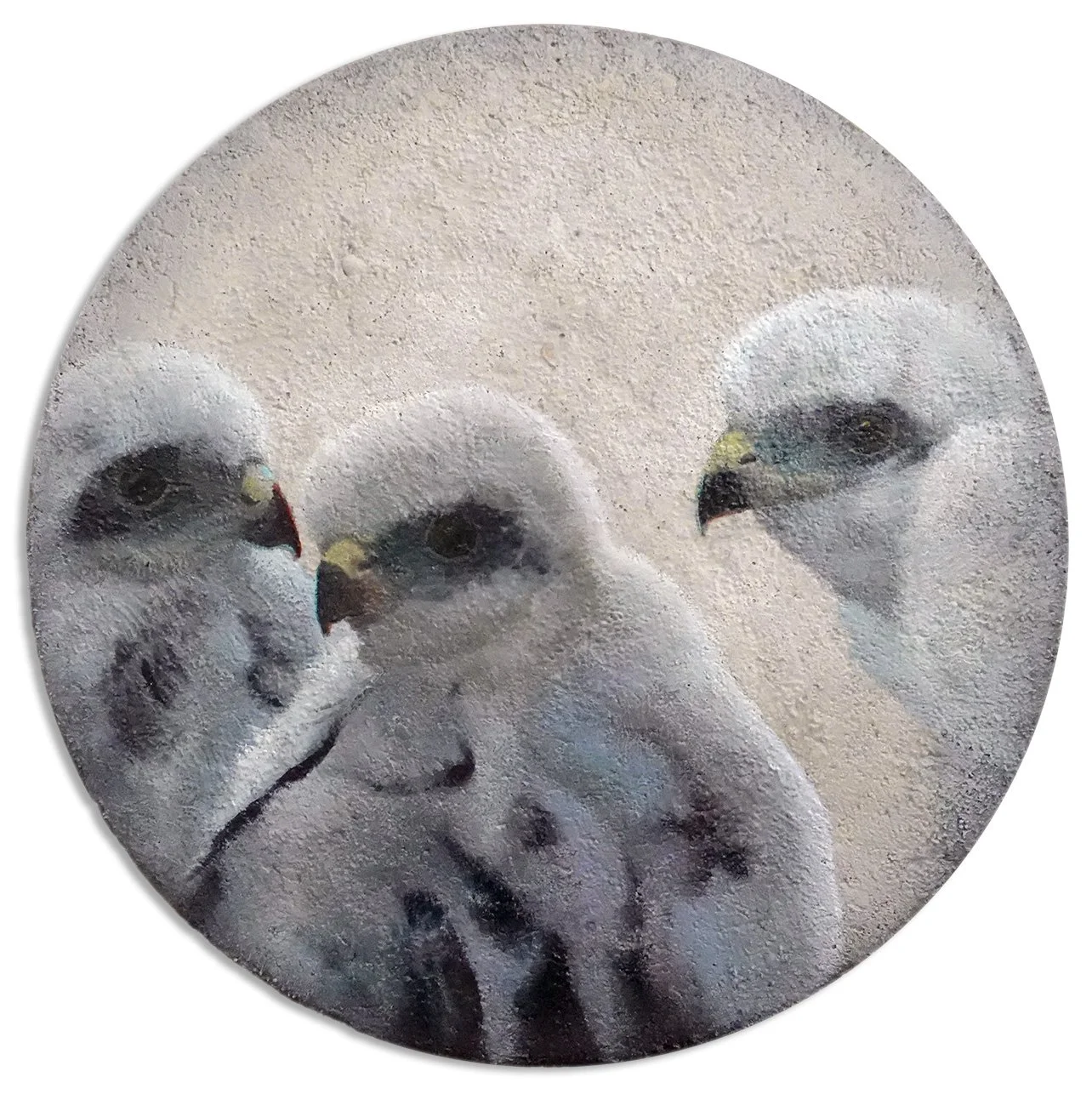A photo of a section of a cave wall near where I harvested my pigment - this spot had just a couple of red ochre ribbons, but deeper into the cave there was a bigger deposit.
I started making the substrate for this piece in Athens, but I continued it after my return home and painted it here! The background is special - the substrate is made of white concrete mixed with natural cave pigment I harvested at in an abandoned silver mine tunnel on my friend’s monastery grounds and then processed into powder. I believe it is red ochre, which is one of the original archaic pigments used in ancient cave paintings. I also applied the red ochre to the surface for extra pigmentation.
The subject matter is a wild adult male red fox (Vulpes vulpes) which I got to observe on Mount Lycabettus due to the kindness of my field biologist friend Dimitris! He discovered that this fox shifts dens around 8am when the sun begins to infiltrate his early morning den; the one he moves into a narrow cave tunnel with two openings in a cliff face. Watching him navigate an almost sheer rock wall to get to that second den was witnessing a truly skilled athlete in action.
I like that the substrate and the subject both have caves in common, and though I glazed the whole of the fox irises with gold, a portion of them beneath the glaze are just the raw red ochre. I managed to finish this piece in time to install it in my Materiality show in Eppley Art Gallery, so it’s on display there through October 7th if you’d like to see it in person!
This is Ancient Origins, acrylic, artist-harvested red ochre natural cave pigment, and concrete on recycled wood round, 17.5x17.5x.75”, 2023.









